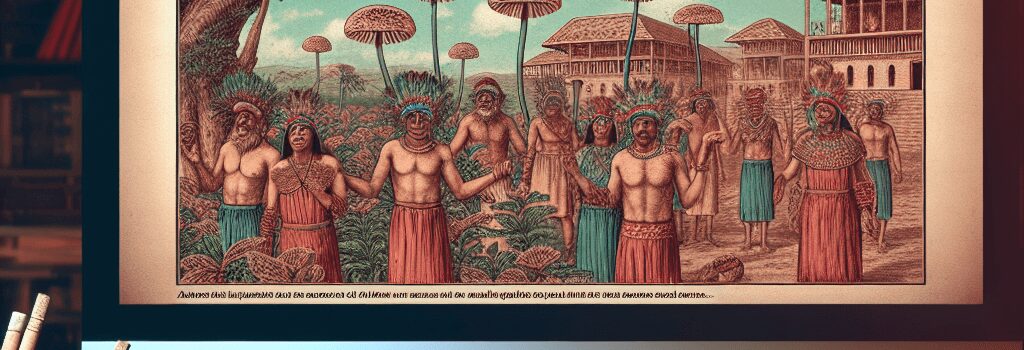Hallucinogens in Ancient Chavín Society

Expanding our understanding of social stratification and ceremonial practices in the ancient Andes, recent chemical analyses of artifacts from Chavín de Huántar reveal that psychoactive snuffs—containing vilca-derived bufotenin and wild tobacco alkaloids—were strictly reserved for a select elite. Conducted using state-of-the-art residue-detection methods, these findings not only predate similar Wari and Tiwanaku traditions by a millennium but also underscore the role of exclusive ritual knowledge in reinforcing political hierarchies.
Contextual Background: Chavín de Huántar and Middle Horizon Precedents
Chavín de Huántar, located at 10,000 feet in Peru’s Ancash region, served as a seminal cultural hub from 1200 BCE to 200 BCE. Known for its distinctive granite temple complexes and labyrinthine galleries, the site offers a window into pre-Inca ceremonial life. While earlier reports highlighted communal hallucinogenic beer consumption among the Middle Horizon Wari (circa 600–1100 CE), the Chavín evidence shifts the timeline of elite-controlled psychedelia back by roughly 1,000 years.
Archaeological Findings: Snuff Tubes, Tablets, and Spoons
- Artifacts Recovered: 23 items, including bone snuff tubes (5–12 cm), marine shell spoons, and flat tablets.
- Discovery Context: A sealed gallery in the Circular Plaza atrium, accessible only through a restricted passage, suggesting controlled participation.
- Chemical Traces: GC-MS and LC-MS analyses detect bufotenin (up to 12 µg/cm²) and nicotine metabolites indicative of wild Nicotiana species.
Technical Analysis of Chemical Residue Detection
Utilizing high-resolution mass spectrometry and Fourier-transform infrared spectroscopy (FTIR), researchers identified characteristic vibration bands of indole alkaloids. Microbotanical starch-grain analysis and scanning electron microscopy (SEM) revealed heat-induced surface pitting, consistent with toasting protocols documented ethnographically among Q’ero shamans. The integration of ambient ionization techniques such as DESI (Desorption Electrospray Ionization) further enabled in situ mapping of residue distribution within pipe lumens.
Comparative Ethnobotany: Preparation and Potency Modulation
Vilca seeds (Anadenanthera colubrina) are rich in DMT and bufotenin; however, bufotenin’s oral bioavailability is limited by monoamine oxidase (MAO) enzymes. The addition of fermented chicha—containing β-carbolines from maize or molle fruits—could inhibit MAO activity, prolonging psychoactivity. Contrastingly, the Chavín practice appears focused on inhalation snuffs, maximizing peak intensity while restricting dosage and knowledge to ritual specialists.
Sociopolitical Dimensions: Ritual Exclusivity and Elite Authority
Unlike the broadly participatory Wari chicha feasts, the confined spatial context of Chavín snuff chambers indicates deliberate exclusion. Such exclusivity likely bolstered priestly authority, embedding psychedelic experience within an elite-controlled sacred domain. As anthropologist Daniel Contreras posits, “Mastery over hallucinogenic preparation was a key source of socio-religious capital, delineating insiders from the broader polity.”
Recent Advances and Future Directions
Modern applications of metabolomics and protein-residue fingerprinting promise to elucidate additional psychoactive mixtures used across Andean sites. Ongoing excavations at southern coastal locales aim to compare Chavín’s centralized model with peripheral use-cases. Interdisciplinary efforts, integrating GIS-based spatial analysis of ceremonial architecture, will further clarify how built environments orchestrated ritual exclusivity.
Expert Insights
- Dr. Maria Eagleton (Ethnobotanist): “The precise quantification of bufotenin and nicotine underscores the sophistication of early botanical knowledge—ancient Andean specialists likely conducted selective breeding to optimize alkaloid yield.”
- Professor Luis Calderón (Bioarchaeologist): “Spatial constraints of the Condor Gallery and Circular Plaza snuff chamber reflect controlled sensory experiences, akin to modern VIP areas in ritual spaces.”
Conclusions
The Chavín data reshape our narrative of Andean psychoactive traditions, highlighting elite-mediated hallucinogen use as a technology of power. By refining analytical methodologies and expanding excavations, researchers will continue decoding the interplay between chemistry, ritual, and authority in ancient societies.